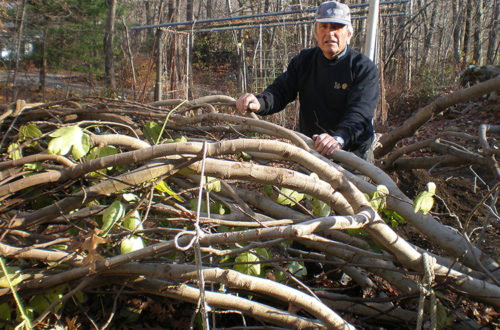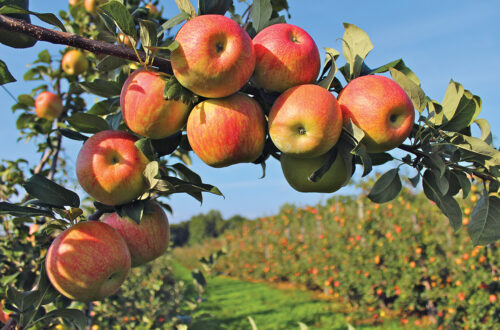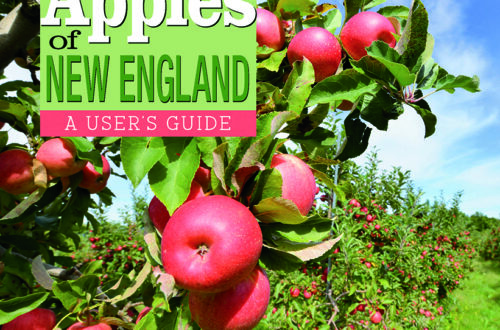By Russell Steven Powell
This story first appeared in the Orchard Blog at newenglandapples.org
Highly variable is about the best way to describe the 2023 New England apple crop.
Most people by know now that the fresh apple crop will be significantly smaller due to a region-wide freeze the night of May 18. Yet many orchards have full crops, and most have some apples.
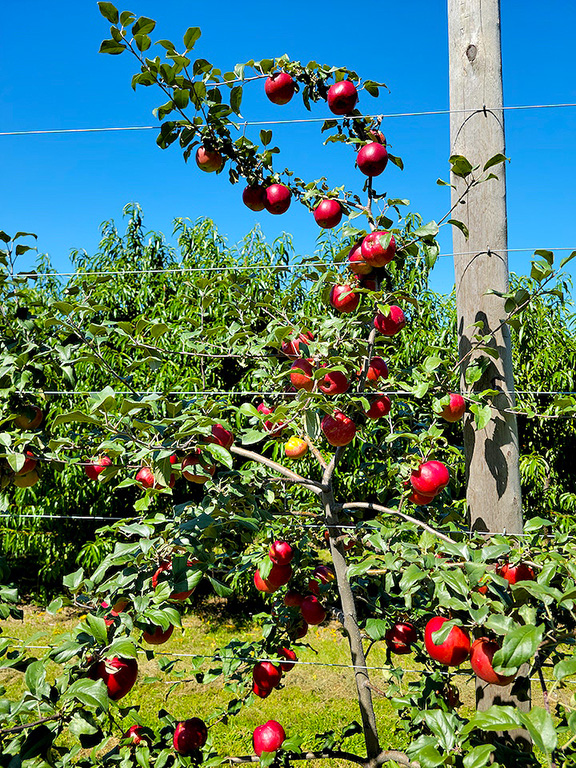
Fire engine-red Sweet Maia, a new firm, sweet, early season variety, at Ragged Hill Orchard in West Brookfield, Massachusetts.
When all the apples are picked, though, losses could amount to as much as half of a normal crop of between 3.5 million and 4 million 42-pound boxes. It means there will be plenty of fresh apples this fall, but the season may not last as long, and apples will not be available at all orchards.
Some orchards suffered significant losses, but frost damage varied depending on location. Generally, orchards on higher elevations where air circulates freely fared best.
On lower locations – and even on the lower limbs of trees in some places – temperatures in the low 20s May 18 lingered for four to six hours overnight. That’s too cold for too long for apple blossoms.
But just as no two orchards are alike, neither are trees and their locations. Many orchards escaped the frost completely. Another orchard may have lost much of its crop but have some blocks, and some varieties, that survived.
There should be plenty of apples at farm stands and in stores, but fewer places will be offering pick-your-own, and some varieties may be harder to find.
As always, it is best to call ahead to see what’s happening at the orchard you plan to visit. Use our Orchard Finder at newenglandapples.org/orchards for locations and contact information.
Every orchard is different, and handling its situation accordingly. But they remain open for business and welcome visitors to experience the orchard in its full fall glory.
In addition to fresh-picked apples, fall festivals will still be on and there will be lots of ciders fresh and hard, and of course, cider donuts, among the attractions.
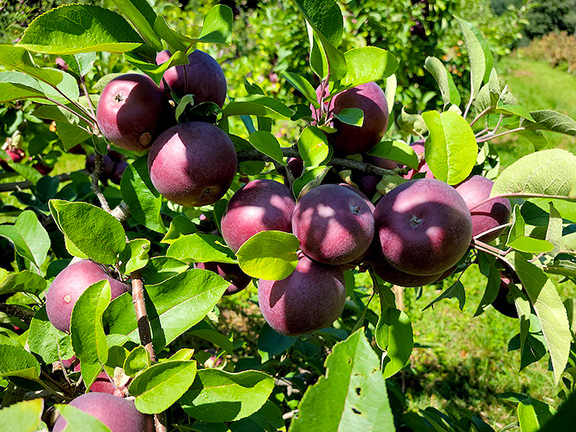
The trees are loaded with RubyMacs, a redder strain of McIntosh, at Breezelands
Orchards in Warren, Massachusetts. Only a few hundred yards away, Breezeland’s Ginger Gold crop was damaged by hail.
Weather
The May 18 frost was one of three significant weather events to hit the region’s orchards in 2023, and the cumulative effect has been devastating in some places.
A single night of overnight temperatures below -10ºF in February wiped out most of New England’s peach crop before it started. Many apple growers rely on peaches to supplement their apple crop.
Despite this, spring apple bloom was strong throughout New England, and growers were feeling optimistic that they could compensate with a strong apple crop and their other fruits and vegetables. Then came the late frost.
July’s heavy rains brought further damage to diversified farms, flooding many field crops. Some orchards were impacted by all three events: no peaches, less apples, and fewer vegetables.
New England’s farmers are resilient and used to challenges. But some have sustained historic losses. Now is the time for the public to respond by supporting all of our apple growers. It’s an investment in our future.
In any year, fruit growers face weather challenges in some locations. To add insult to injury, some orchards that survived the frost subsequently lost some of their crop to hail.
Here are some things consumers can do to help:
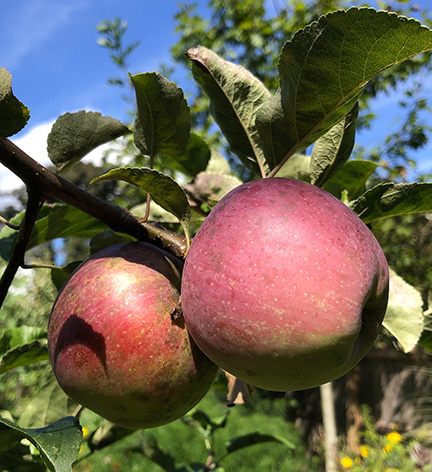
Liberty grown organically in Fairfield.
Perfect Fruit?
Apple growers spend their year trying to grow perfect fruit, and they succeed a remarkable amount of the time.
The well-shaped, brilliantly colored, smooth-skinned apple is the norm at most orchards. But nature can be as messy as it is abundant, and invariably some fruit gets nicked or marred along the way.
There are many causes of blemishes to apples, and some are cosmetic only. The affected apple is perfectly good to eat, as long as the consumer values flavor over appearance.
Take hail damage, for example. A beautiful looking crop can be impacted by as little as 30 seconds of a summer hail storm, leaving small nicks or pockmarks in the apples. If the damage is severe, the apple can split or discolor, and end up in the juice bin. But light hail damage is no reason to reject an otherwise delicious apple.
Sun spots are another cosmetic concern, a result of summer heat waves. As with hail, it makes the apple less attractive for eating, but the fresh fruit is not diminished in any other way.
Scab or russeting which appears as rough or raised spots on the apple’s skin has no impact on healthfulness or flavor. The same goes for bruises, which can occur when apples are mishandled between tree and table: they do no harm if eaten and should not deter anyone from the luscious fruit beneath.
One more thing: it is always wise to wash your apples and to give them a good shine. But the dull film on most apples straight from the tree is a naturally occurring bloom that helps the apple retain moisture (some consumers mistake it for pesticide residue).
Many people ask us where they can find organically grown apples in New England. Our moist climate makes this difficult, though some growers have tried, with limited success.
We spoke with one grower in Rhode Island this spring, who several years ago set aside five acres of trees for organic treatment. This was the first year they could be sold as such. “Now,” the grower said, “my challenge is to engage consumers with what they think they want.”
What he meant is that his organic apples would likely have black specks, odd shapes, and other imperfections, qualities that most consumers have come to reject.
More and more people want to eat healthy, buy local, and support the family farm. One way to do this is to rethink our demand for uniformity in our apples. The Red Delicious apples imported from the Pacific Northwest are famous for always looking exactly the same. But what they gain in appearance, they sacrifice in flavor.
If you are willing to overlook the occasional cosmetic flaw, nothing can match the flavors and textures of a wide variety of New England apples, old and new. By accepting the occasional blemish, you help the apple grower as well.
Russell Steven Powell is the former executive director of the New England Apple Association and now serves as its senior writer. He publishes the blog newenglandapples.org, and is the author of America’s Apple. He lives in Hatfield, Massachusetts.


